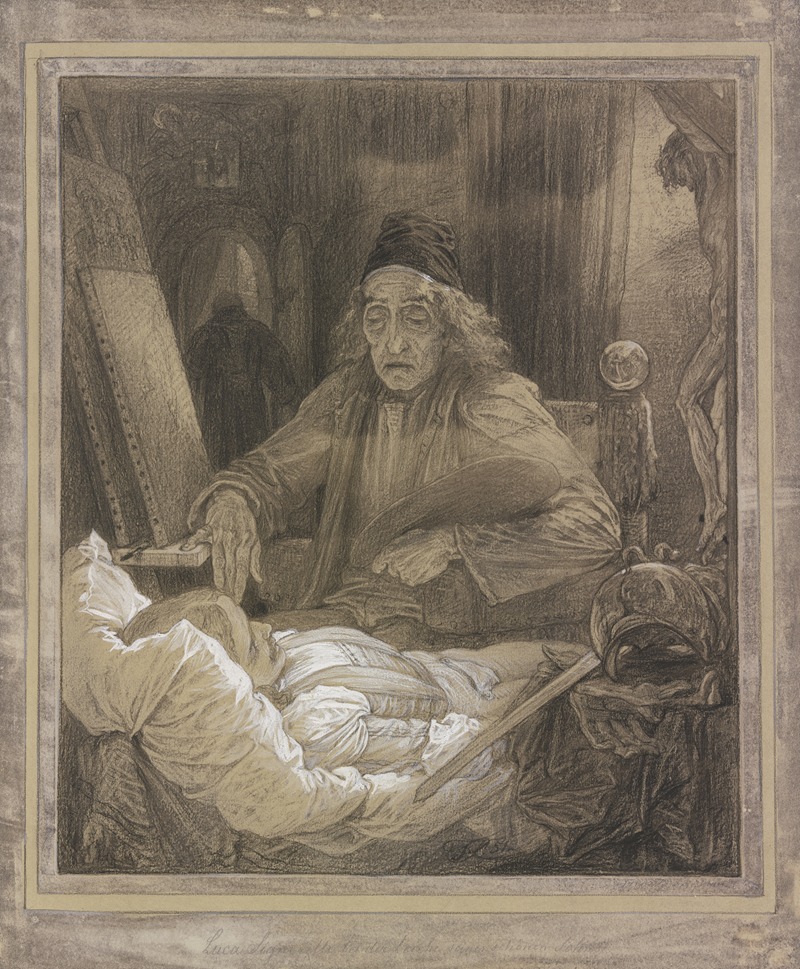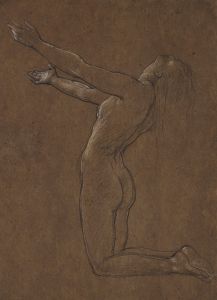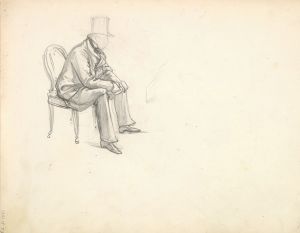
Luca Signorelli Painting his Dead Son
A hand-painted replica of Frederic Leighton’s masterpiece Luca Signorelli Painting his Dead Son, meticulously crafted by professional artists to capture the true essence of the original. Each piece is created with museum-quality canvas and rare mineral pigments, carefully painted by experienced artists with delicate brushstrokes and rich, layered colors to perfectly recreate the texture of the original artwork. Unlike machine-printed reproductions, this hand-painted version brings the painting to life, infused with the artist’s emotions and skill in every stroke. Whether for personal collection or home decoration, it instantly elevates the artistic atmosphere of any space.
"Luca Signorelli Painting his Dead Son" is a painting by the British artist Frederic Leighton, completed in 1858. This work is a notable example of Victorian-era art, reflecting the period's fascination with historical and emotional subjects. Frederic Leighton, later known as Lord Leighton, was a prominent figure in the Victorian art world, celebrated for his classical themes and meticulous technique.
The painting depicts a poignant and dramatic scene involving the Italian Renaissance painter Luca Signorelli. According to historical accounts, Signorelli experienced the tragic loss of his son, who died at a young age. The story goes that Signorelli, in his grief, chose to immortalize his son by painting him after death. This narrative, though not extensively documented in historical texts, has been a source of inspiration for artists and writers, capturing the intersection of personal loss and artistic expression.
Leighton's painting captures this intense moment of sorrow and creativity. The composition is centered around Signorelli, who is shown in the act of painting his deceased son. The artist's expression is one of deep concentration and sorrow, reflecting the emotional weight of the task. The son is depicted with a serene and peaceful demeanor, contrasting with the somber mood of the scene. Leighton's use of light and shadow enhances the emotional impact, highlighting the figures against a subdued background.
The painting is characterized by Leighton's attention to detail and his ability to convey complex emotions through composition and color. The choice of subject matter reflects the Victorian interest in themes of mortality, the role of the artist, and the power of art to transcend personal tragedy. Leighton's work often explored such themes, and "Luca Signorelli Painting his Dead Son" is a testament to his skill in merging narrative and emotion.
Frederic Leighton was part of the broader Pre-Raphaelite movement, which sought to return to the detail, intense colors, and complex compositions of pre-Renaissance art. While Leighton was not a member of the Pre-Raphaelite Brotherhood, his work shared many of their ideals, particularly in its emphasis on beauty and emotional depth.
The painting was exhibited at the Royal Academy in London, where it was well-received for its technical proficiency and emotional resonance. It remains an important work in Leighton's oeuvre, illustrating his ability to tackle challenging and evocative subjects with sensitivity and skill.
"Luca Signorelli Painting his Dead Son" is housed in a private collection, and as such, it is not as widely accessible as some of Leighton's other works. However, it continues to be studied and appreciated for its artistic merit and the poignant story it tells. The painting serves as a powerful reminder of the enduring human themes of loss, memory, and the redemptive power of art.


















